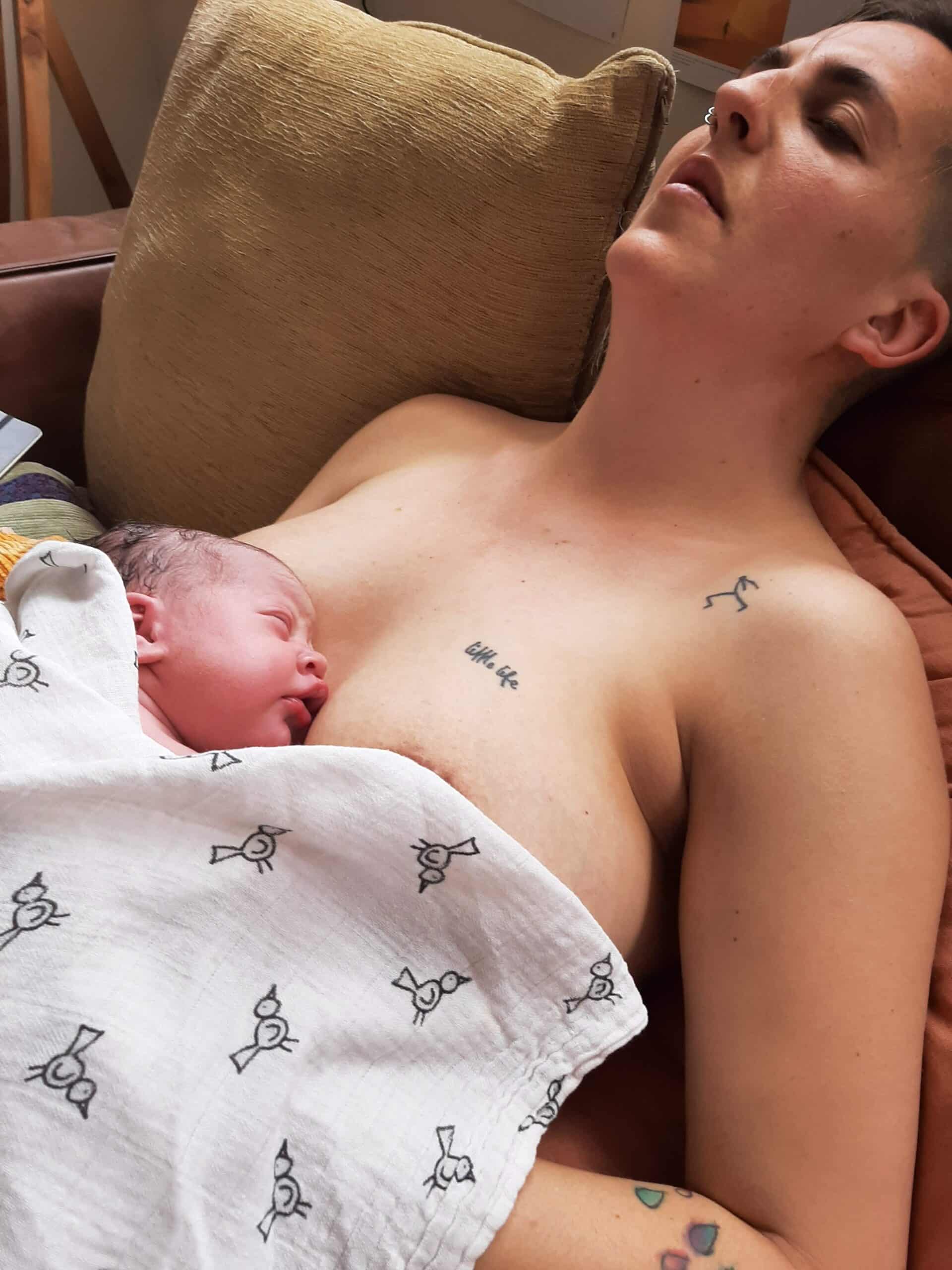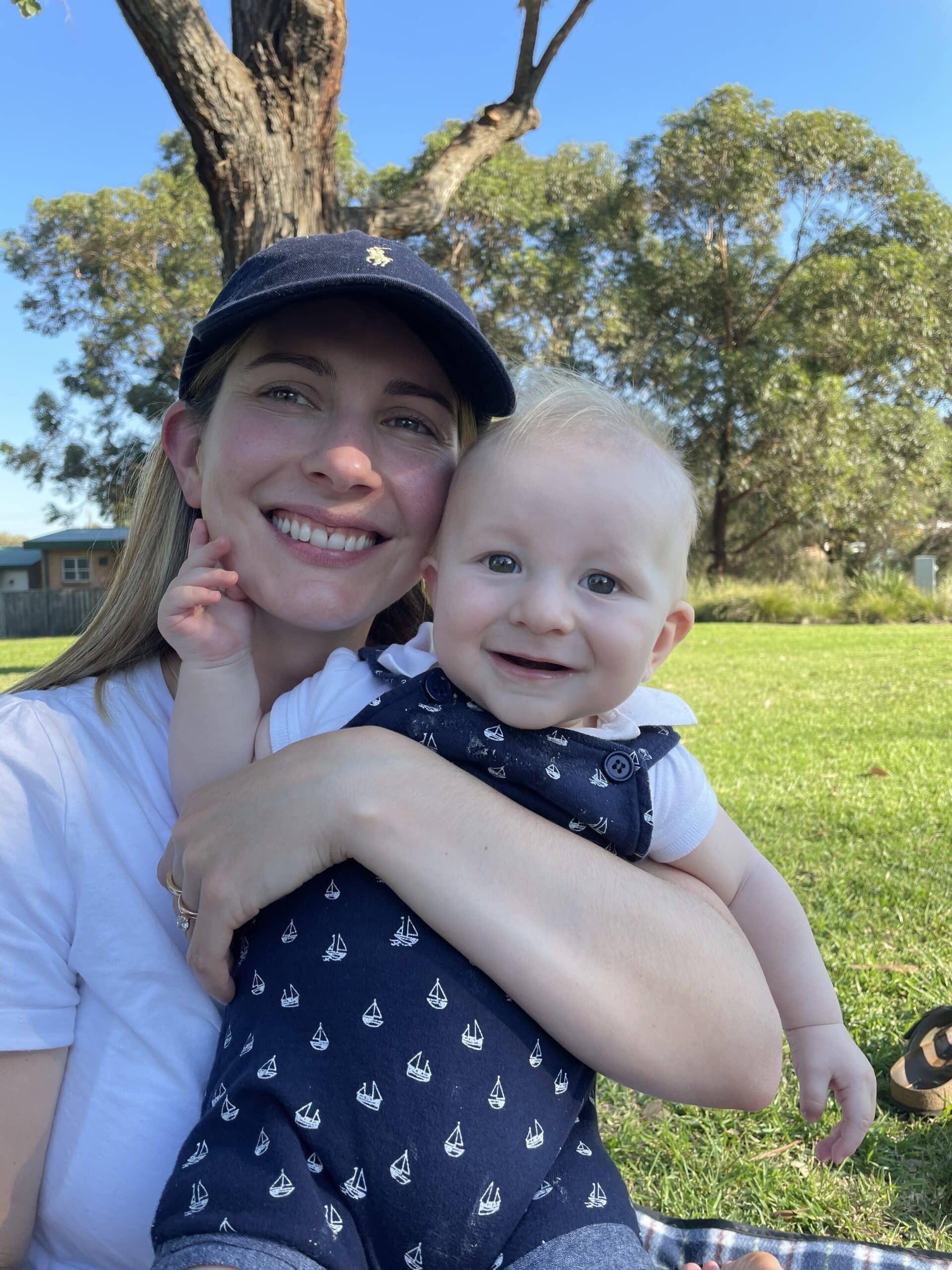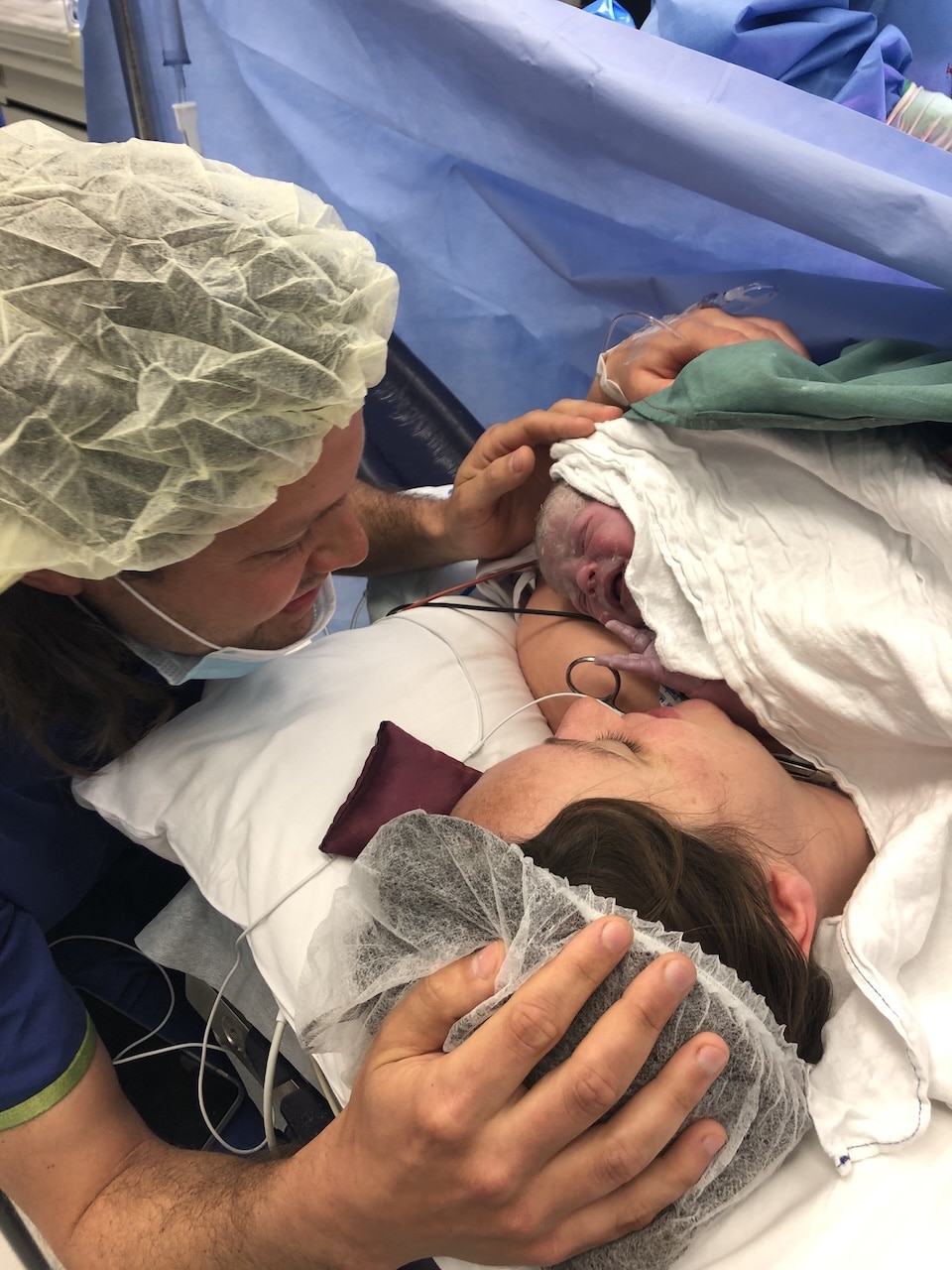Podcasts Dani – induced and physiological birth
EPISODE 368
Dani – induced and physiological birth
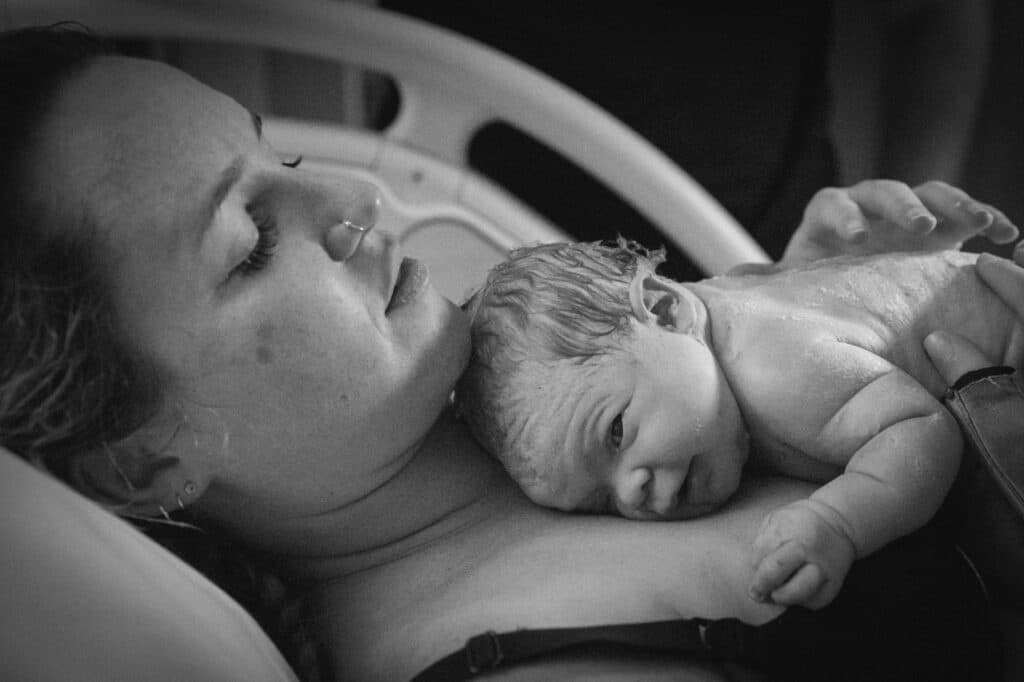
“We were really fortunate to conceive on the first go, which wasn’t what we were really expecting. From the start I felt very confident that I wanted to go through the private hospital system and I went to an obstetrician who was recommended to us. His values were very aligned with ours. As soon as we met him it felt like we were old friends which was lovely.
“I felt really well in the first trimester but at about 20 weeks I developed a cough and it lingered for the rest of the pregnancy. I ended up with an intercostal tear and subsequently after birth I was diagnosed with a prolapse even though I didn’t have any sign of pelvic floor weakness in pregnancy. I also had horrific indigestion so I was chewing gaviscon like it was candy and sipping really cold water.
“I wanted minimal intervention but I was also open to what needed to happen to ensure a safe delivery. I wanted to go as long as I could without an epidural and presumed I had a high pain threshold. At 39 weeks I had a stretch and sweep and later that night I had a gush and it was my waters starting to leak. I called the hospital and the midwives encouraged me to go in for a check up. We went home after the hospital. I didn’t do anything to encourage labour to start but I thought it best to rest so I stayed in bed all day watching movies. The next day I went in for an induction and to be honest I didn’t know anything about it. I had no idea that there’s increased pain and increased interventions with induction. We’d done Calmbirth but it didn’t give us practical skills to take into labour.
“They started the syntocinon slowly but increased it every thirty minutes. After six hours my OB commented on how comfortable I looked and I was; I was just walking around the room, not really bothered by the contractions. I think it’s because my forewaters were still intact. After a few more hours he offered to do an internal and that’s when he realised that my waters were intact so he broke them and that’s when the pain went from zero to one hundred. I was still very much in control and I could manage my breath to navigate the discomfort. After a few hours I tried the bath but I hated it and soon after I opted for the epidural. The anaesthetist came in thirty minutes later and I had internalised and couldn’t really speak. I hadn’t been checked but I couldn’t communicate that and thankfully my birth photographer told him to wait. I was five cm which was disappointing but the epidural worked straight away and I managed to get a few hours of sleep.
“I told the midwife I was having breakthrough pain and I wasn’t able to get any more pain relief. I had to breathe my way through an hour of contractions and felt like I wanted to push that whole time but they wouldn’t let me push because I was only 9cm. It was a really uncomfortable situation to be in. The first push was relieving and then the rest were just awful. I just kept wishing someone would come in and say they were taking me to the theatre for a caesarean.
“When she was born they put her on my belly and I just couldn’t believe it; I couldn’t comprehend that I’d had a baby. My eyes were closed and I was catching my breath and grounding myself. I birthed the placenta and everyone was commenting on how beautiful it was. Unfortunately because the induction had taken so long, my whole body was full of fluid so my labia were very swollen so I had extensive labial tearing and a grade 2 perineal tear. I stayed in that room for a few hours before I was moved to the maternity ward.
“It wasn’t for a day or so that I thought back to the pushing stage that my memories were coming as black and white flashes – like an Alfred Hitchcock film. The disappointment came a bit later…it wasn’t disappointment so much as fear, a very traumatic feeling. I have a history of PTSD from an accident years ago and I was having the very same feelings. I was very mindful of my mental health so I really used my toolbox of strategies at that time. I felt like I had enough skills to work through it. We had a few complications in that first week that compounded my anxiety. Tilly was diagnosed with hip dysplasia at birth so so she needed to go into a pelvic harness at three days old. And I got a uterine infection post-birth and my milk didn’t come in for eight days. I stayed in hospital for five days which was reassuring to have the midwives right there all day and night. I gave Tilly formula for a few days and I really appreciated the midwives’ guidance with that.
“I woke up on day three and the blues started; I was crying at everything. I also noticed that my pain had increased significantly and my lochia had an awful smell to it and I’d started to pass really big clots. I started antibiotics for a uterine infection straight away.
“Every time I looked at Tilly for the first two weeks I would cry; I couldn’t hold her close or tight because she had her harness on. We couldn’t do much skin to skin without discomfort for both of us. The bonds scratchy bodysuits fit nicely over the harness and the love to dream swaddles were made for the harness so we got by. She was in the harness for nine of the first 13 weeks and she hasn’t had issues since.
“When I was in hospital a physio visited me on the ward and I mentioned that I had bladder incontinence. It continued for some time; it wasn’t constant but it was stress incontinence so if I laughed too hard my entire bladder would void. I saw a pelvic health physio and she gave me strategies to use and she also told me that it wasn’t uncommon and I would most probably recover if I looked after my body and rested and let my pelvic floor heal. I ended up being fitted for a pessary about four months postpartum. I found I really needed it a week before my period. I used it till I fell pregnant with Eddie and used it a bit while I was pregnant but I haven’t needed it after Eddie’s birth.
“We knew that we wanted to try for another baby when Tilly was around two. Eddie’s pregnancy was a surprise and definitely not planned. The first pregnancy test was negative and then I had a craving for a kebab so I went home and did another test and it was positive. I went with the same obstetrician which I was really happy about. Pat and I started listening to the podcast and focussed on stories that were similar to the birth experience we wanted. Unfortunately my pregnancy wasn’t as easy; I had constant nausea till 13 weeks and I got persistent back and pelvic pain. I also had recurring UTIs and thrush which was awful. I approached my labour so differently – I visualised everything from my waters breaking spontaneously, to the drive to hospital, to how the birth suite would look and feel to keep the oxytocin flowing.
“I’d had contractions on and off for a number of weeks so towards the end of the pregnancy I was having braxton hicks every twenty minutes and they were strong enough to take my breath away. I was told I had an irritable uterus. I woke up one day and had a show and a couple of days later I cooked and went for a walk and then went home and felt exhausted. Soon after my waters broke all over my parent’s leather couch. I started laughing hysterically because I couldn’t believe how much fluid was coming out. My mum and sister helped me to the bathroom and I had a shower and once I got out I had my first contraction and that’s when I started getting things ready for the hospital.
“I’d hired a TENS machine and I put it on before I got in the car. I was monitored and the midwife confirmed I was in established labour and then she asked me about my birth preferences. She went and dimmed the lights, she had the candles on and had essential oils in the diffuser and then she took me down there; it was all so lovely.
“The TENS machine was amazing; I recommend it to everyone. It didn’t take the pain away but it made it manageable. I was lying on my side and Pat and my mum were doing acupressure on me. After an hour I moved to the birth ball and I leaned over the end of the bed. From there I moved into the bathroom and got in the shower but it was a catch22 because I knew I had to take the TENS off to get in the water. I was leaning against the wall, swaying my hips and using horse’s breath and it felt intuitively right to do. As the contractions progressed it was harder to maintain horse breath and wanted to make noise instead and I was groaning. We were left alone for most of this time.
“When my midwife checked me I was 5cm and she could tell I was defeated but she reassured me that I was doing really well. She encouraged me to get into the bath and in the time it took to run the bath I had three rolling contractions that were each three-four minutes long and so intense. It was a huge relief getting into the bath and then my body started pushing which scared me because I’d just been told I was 5 cm. The midwife came over and checked me again and she told me I was 8cm and needed to get out of the bath. Everyone helped carry me to the bed and I was on my hands and knees and held on to the end of the bed. I was begging to push. Once he was born I pulled him up and onto my chest and it was amazing.
“It was such a different feeling to when Tilly was born; I was so aware of him and what had just happened. It was a real high and it lasted for a couple of days. I tore along my perineal scar and the recovery was very quick and there was very little discomfort. I got a uterine infection again but it didn’t appear until I was home and it didn’t affect my milk at all. I passed a very large clot – about the size of my palm – and I rang the hospital straight away and they encouraged me to go in and get checked and they sent me home with a script for antibiotics.
“Eddie was diagnosed with moderate hip dysplasia so we opted to wait a week till using the brace. We knew what to expect, we knew the techniques and he only needed it for six weeks and then it was done. My mental health was much better this time; I felt stable and confident and that was a big relief.”
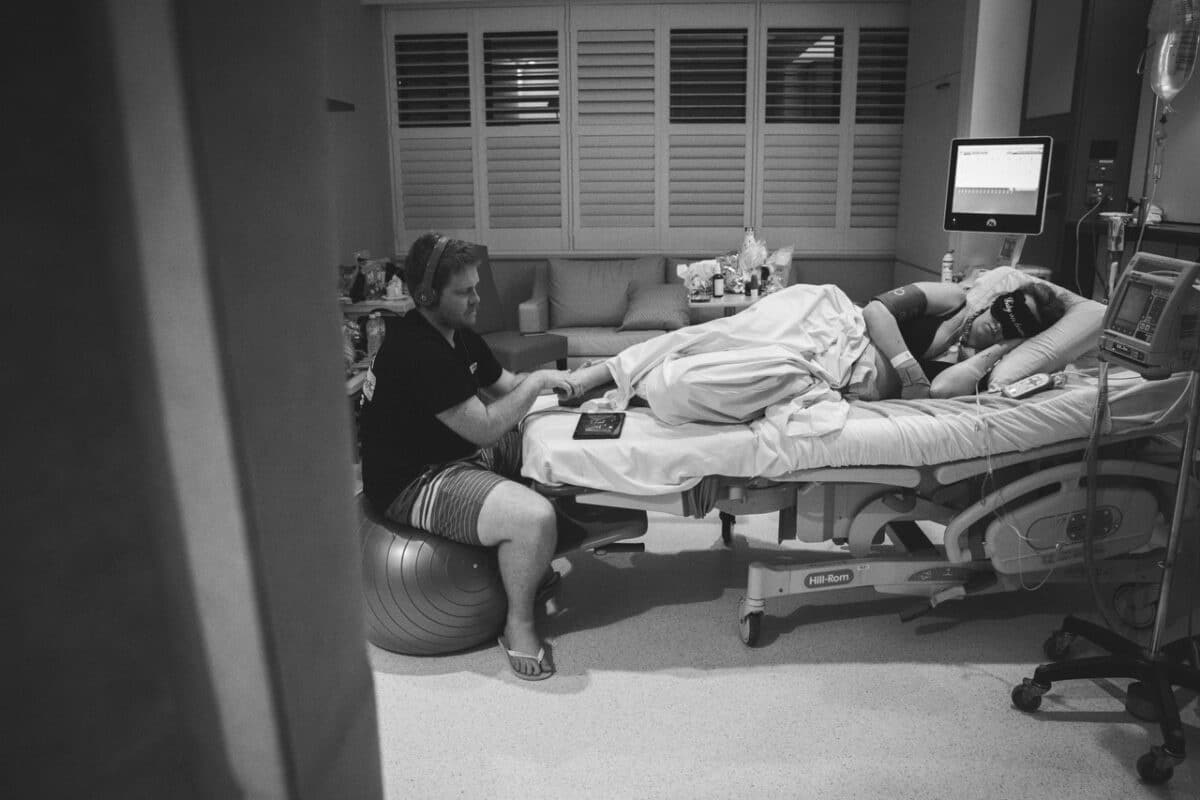
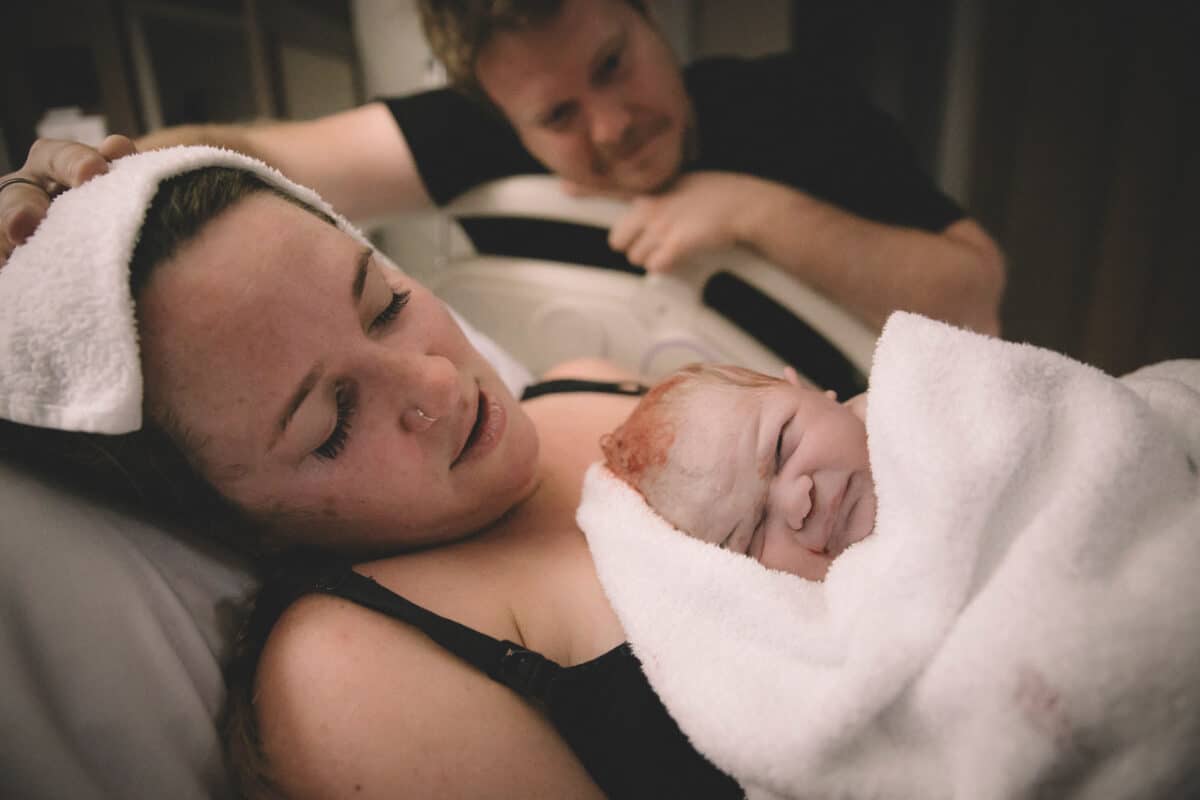
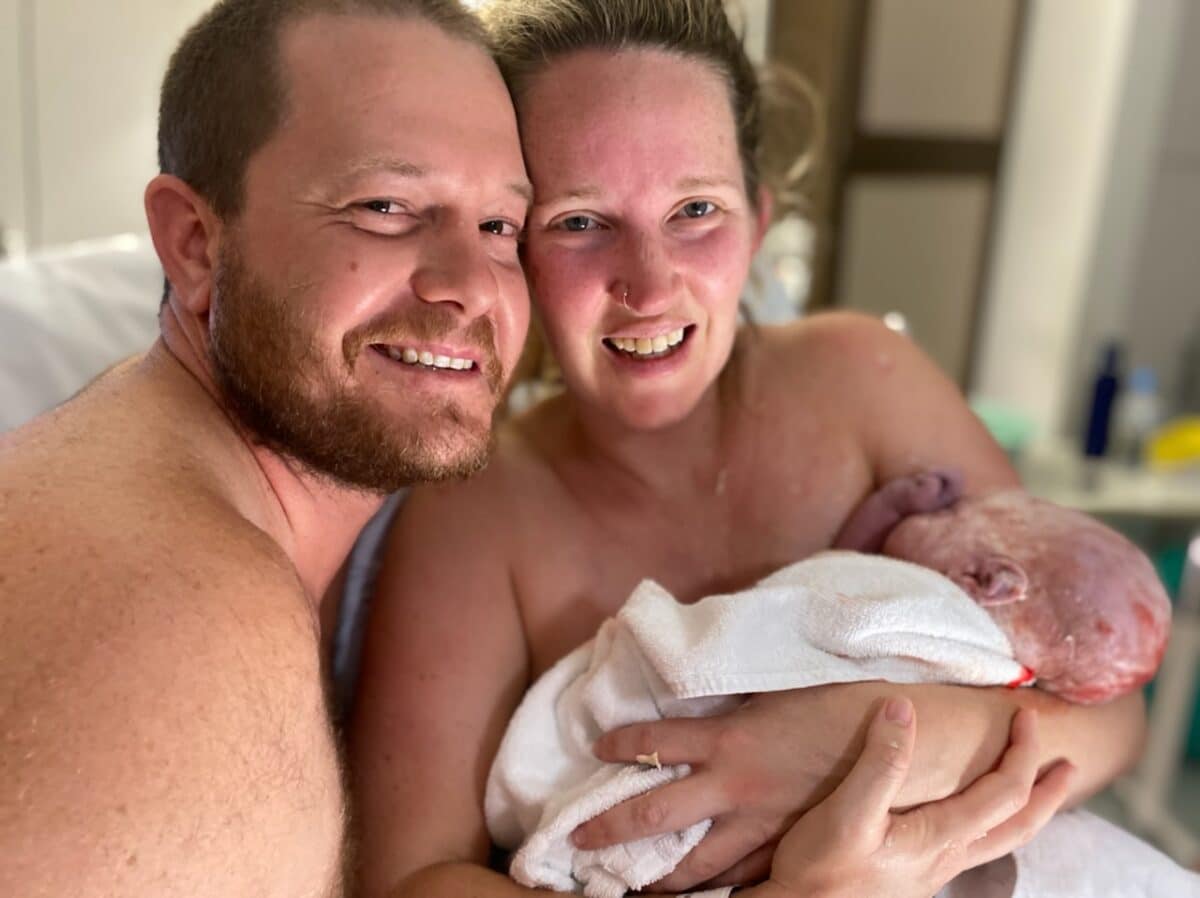
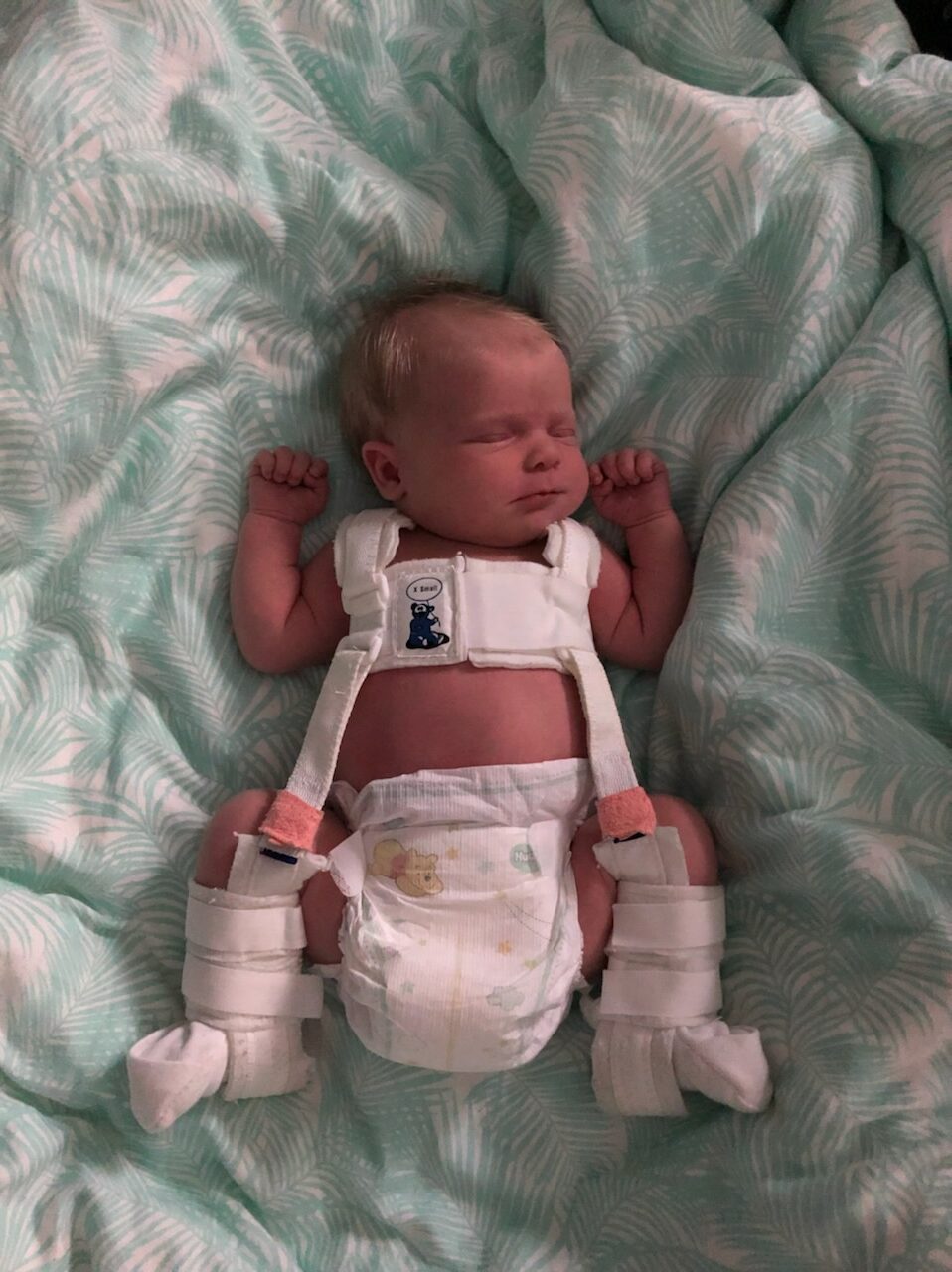
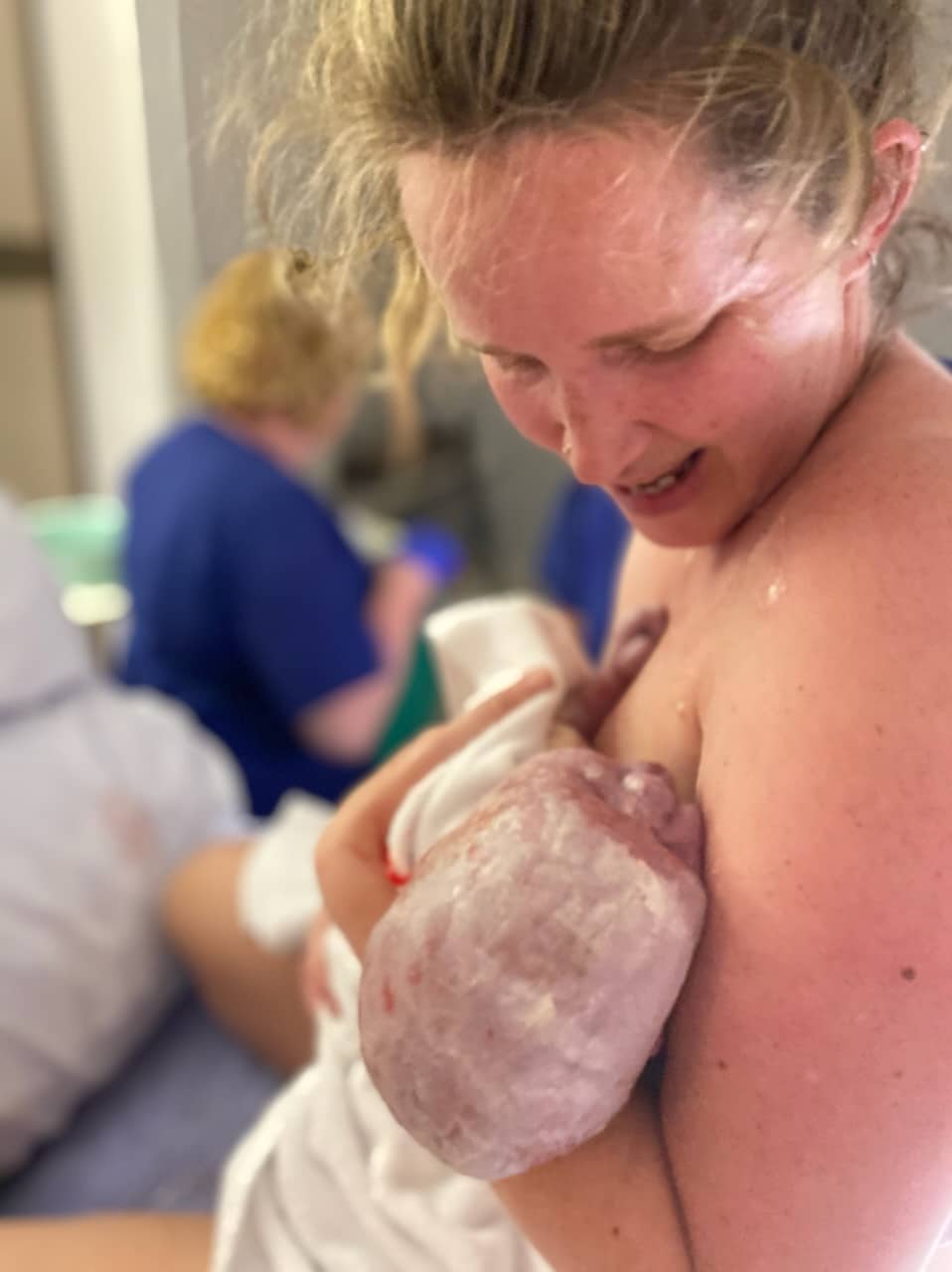
Topics Discussed
Epidural, Hip sysplasia, Induction, Labial tear, Private obstetrician, Prolapse, Spontaneous labour, Two Vaginal Births, uterine infection
Episode Sponsor
Today’s episode is brought to you by Bliss Birth. At Bliss Birth you can hire or purchase the incredible Elle Tens (4 week and 8 week hire options available) Enjoy 10% off the hire or purchase of the Elle Tens with the code: AUSTRALIANBIRTHSTORIES
Categories
Related Products
-
Birth Meditations
$49.00Narrated by Sophie Walker, these soothing and informative meditations help you feel supported and confident around birth.
Join the conversation
Sign up to get the latest updates, freebies, podcast releases straight into your inbox
@AustralianBirthStories
Follow along with us
@AustralianBirthStories
Follow along with us
@AustralianBirthStories
Follow along with us
@AustralianBirthStories
Follow along with us
@AustralianBirthStories
Follow along with us
@AustralianBirthStories
Follow along with us
@AustralianBirthStories
Follow along with us
@AustralianBirthStories
Follow along with us
@AustralianBirthStories
Follow along with us
@AustralianBirthStories
Follow along with us
@AustralianBirthStories
Follow along with us
@AustralianBirthStories
Follow along with us



